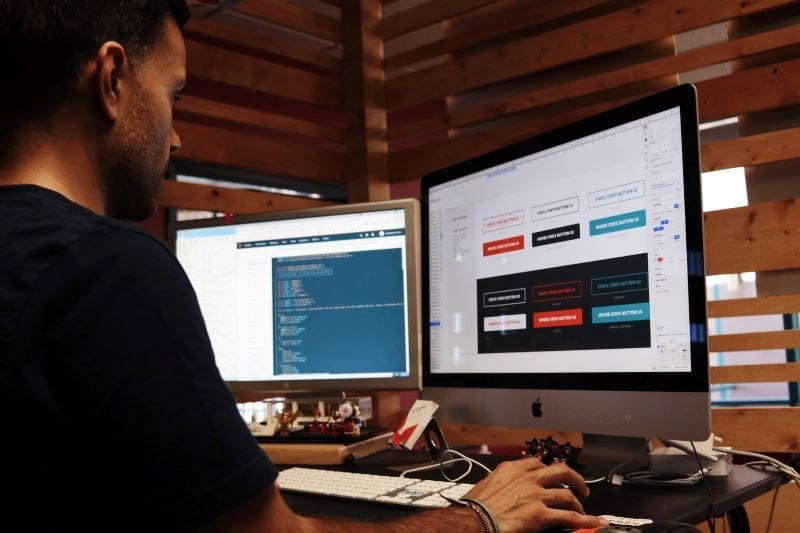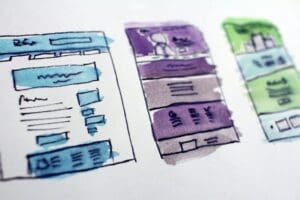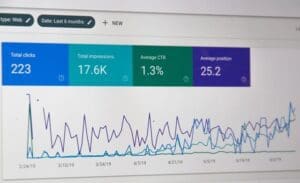
7 Tips for Reducing Your Bounce Rate

Bounce rate is a metric that can be used to discern the effectiveness of your website. It is the rate of visitors that enter your website, view a single page, and leave without exploring any further. A high bounce rate means your visitors either aren’t enjoying what they find when they enter your website, or the information isn’t relevant.
There are many factors that can play into your visitor’s likelihood of staying on your website. A lower bounce rate can be a huge asset for online businesses. The more someone looks into your products or services, the more likely they are to use them.
There are a lot of options for internet users, so their willingness to dig into a website is often based on quickly-formed opinions. In fact, most visitors will give a website about 15 seconds to prove their worth. JLB Works, an established web design and development company in Nashville TN, provides a list of tips and tricks on how to get visitors to stay on your website longer.
7 Tips to Reduce your Bounce Rate:
- Fast Load Time
- Intuitive Layout
- Target the Right Keywords
- Focus on Useful Information
- Make Sure It’s Mobile-Friendly
- Keep It Attractive
- Analyze Your Metrics
1. Fast Load Time
 Internet users like things fast. The speed of a website can depend on many things such as the way in which the information is coded during the web design phase, the size of the images, and any existing redirects. All of these factors can be optimized, but they can also slow your website down if they are not properly addressed.
Internet users like things fast. The speed of a website can depend on many things such as the way in which the information is coded during the web design phase, the size of the images, and any existing redirects. All of these factors can be optimized, but they can also slow your website down if they are not properly addressed.
If a new visitor is only going to give your website 15 seconds and ten of those seconds are spent loading the page, you’re not going to have a very good chance at convincing them to stay.
Visit JLB to learn more about our web design services in Nashville, Franklin, and Brentwood TN!
2. Intuitive Layout
 Can your visitors find the information they need quickly and easily? Web design can affect this in a couple different ways. First, the visual layout of information should direct their attention. This includes using headers, bold text, and numbered lists to draw attention to important information. Text that explains headers should follow directly below. A reader is not going to enjoy jumping around a page to piece together relevant information.
Can your visitors find the information they need quickly and easily? Web design can affect this in a couple different ways. First, the visual layout of information should direct their attention. This includes using headers, bold text, and numbered lists to draw attention to important information. Text that explains headers should follow directly below. A reader is not going to enjoy jumping around a page to piece together relevant information.
Search functionality makes the retrieval of information even easier. Provide this option so visitors can easily find the information they need.
3. Target the Right Keywords
 Your SEO efforts need to target keywords that directly relate to your goods and services. Ranking for a keyword feels good, but it’s useless if it doesn’t help attract the right visitors. Your keywords will help bring users to your website, but they’ll leave if your information doesn’t directly address their needs.
Your SEO efforts need to target keywords that directly relate to your goods and services. Ranking for a keyword feels good, but it’s useless if it doesn’t help attract the right visitors. Your keywords will help bring users to your website, but they’ll leave if your information doesn’t directly address their needs.
Targeting the appropriate keywords will help drive advantageous traffic to your website. Your bounce rate will drop and your conversions will increase.
4. Focus on Useful Information
 Think of the experience of each visitor that enters your website. Is the information they need readily available?
Think of the experience of each visitor that enters your website. Is the information they need readily available?
Clean website copy will help establish your authority and convey information that is relevant to your visitors. This will convince readers to look further into your material. Does this material provide internal links that lead to useful destinations? You are proving your worth so you want to offer the best information possible. Explain yourself clearly and authoritatively. This is your chance to prove your worth.
5. Make Sure It’s Mobile-Friendly
 Our phones are becoming more useful with each new model. This has led many people to do the majority of their internet searches on a mobile device. Does your website adjust to various screen sizes?
Our phones are becoming more useful with each new model. This has led many people to do the majority of their internet searches on a mobile device. Does your website adjust to various screen sizes?
Responsive web design refers to a focus on making your website beautiful and useful no matter what size screen your visitor is using. Are the images cut off? Does the text continue offscreen? This can degrade the experience for your visitor and lead them to look elsewhere.
6. Keep It Attractive
 Aesthetics are important. You can provide the best goods and services in the world but people aren’t going to learn about them if it’s presented in an off-putting package. Effective web design is attractive. It’s inviting. And it can make the difference between a visitor continuing through your website or clicking off.
Aesthetics are important. You can provide the best goods and services in the world but people aren’t going to learn about them if it’s presented in an off-putting package. Effective web design is attractive. It’s inviting. And it can make the difference between a visitor continuing through your website or clicking off.
Continue to update your website over the years with new images, updating functionality, and attractive features. It’s a basic fact that people like things that look good. Make sure your website falls into this category.
7. Analyze Your Metrics
 The metrics for your website will tell you what’s working and what’s not. Use these results to make adjustments. Do particular blog posts have lower bounce rates than the others? Use similar methods and layouts of popular content to optimize areas that aren’t performing as well.
The metrics for your website will tell you what’s working and what’s not. Use these results to make adjustments. Do particular blog posts have lower bounce rates than the others? Use similar methods and layouts of popular content to optimize areas that aren’t performing as well.
Bounce rate is only one of the many useful metrics available to you. Pay attention to how the various areas of your website are performing. Look for similarities between the high-performing areas and apply those to areas that aren’t performing as well. A consistent and engaging website will lower bounce rates and provide great benefits to your business.
Contact JLB today!


Have A Project For Us?
Website design services & digital marketing tailored for user experience and
attracting the right traffic for you with support-that-matters!



